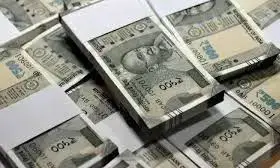Counterfeit notes of Rs 500 denomination surge by 37.3% in 2024-25

Key Statistics from the RBI Annual Report
According to the RBI’s Annual Report for 2024-25, the number of counterfeit ₹500 notes detected rose sharply to 118,000 pieces. In comparison, there were only 85,711 pieces detected in the previous financial year. This increase is particularly significant, especially when contrasted with the overall counterfeit currency detection, which actually saw a slight decrease—from 223,000 fake notes in 2023-24 to 218,000 in 2024-25.
Notably, the ₹500 denomination accounted for the largest share of counterfeit currency detected, marking it as a prime target for counterfeiters. Thus, it has become a focal point in efforts to curb fake currency circulation.
Why ₹500 Notes Are Most Counterfeited
Several factors explain why counterfeiters focus predominantly on the ₹500 note:
- Widespread Usage: First and foremost, the ₹500 note is the most commonly circulated currency denomination in India, making up about 40.9% of the total volume of banknotes and approximately 86% of the total value of currency in circulation. Naturally, its prevalence makes it a lucrative target for counterfeit operations.
- Withdrawal of ₹2,000 Notes: Moreover, the phased removal of the ₹2,000 note from circulation has led to increased dependency on ₹500 notes for large transactions. Consequently, this shift inadvertently increases the risk of counterfeit ₹500 notes flooding the market.
- Cross-Border Smuggling: In addition, many counterfeit notes enter India through border areas. Reports suggest that neighboring countries are sources of smuggled fake currency, adding complexity to the issue.
Identifying Genuine ₹500 Notes
To effectively fight the menace of counterfeit currency, it is essential for the public and banks to be well-versed with the security features embedded in genuine ₹500 notes. Some of the critical security features include:
- Dimensions: The note measures 66 mm x 150 mm.
- Security Thread: A color-shifting security thread changes from green to blue when tilted.
- Watermark: Features Mahatma Gandhi’s portrait alongside the electrotype ‘500’.
- Micro Letters: The words ‘Bharat’ (in Hindi) and ‘INDIA’ are printed in micro letters.
- Color-Changing Ink: The ₹500 symbol is printed in ink that changes color when viewed from different angles.
- Ashoka Pillar Emblem: Located on the right side of the note.
- Swachh Bharat Logo: Printed on the left side.
By recognizing these features, the general public can help avoid accepting counterfeit currency.
Legal Ramifications of Counterfeiting
Counterfeiting currency is a serious crime in India. Specifically, the Indian Penal Code under Section 489C criminalizes possession and circulation of counterfeit currency notes. Furthermore, penalties include imprisonment ranging from seven years to life imprisonment along with hefty fines. Therefore, these stringent laws aim to deter the production and distribution of fake notes.
Steps Taken by RBI and Authorities
To curb the circulation of counterfeit currency, the RBI and government agencies have implemented multiple strategies:
- Enhanced Currency Security: The RBI continuously updates and introduces new security features in currency notes to stay ahead of counterfeiters.
- Public Awareness Campaigns: Additionally, efforts are underway to educate citizens on identifying fake notes through mass media and community outreach programs.
- Technology Deployment: Advanced detection machines and technology are increasingly used in banks and cash-handling entities.
- Collaboration with Law Enforcement: There is also coordinated effort with police and border security to crack down on smuggling and counterfeit production rings.
Conclusion
In conclusion, the 37.3% rise in counterfeit ₹500 notes detected in 2024-25 clearly indicates that the fight against fake currency is far from over. While enhanced security features and stricter enforcement provide a buffer, widespread public awareness and vigilance remain equally critical to protecting the economy from the negative impacts of counterfeit currency. Since the ₹500 note remains the backbone of daily financial transactions, securing it against forgery must continue to be a national priority.






